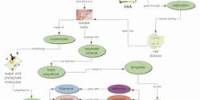Job design methods seek how to design jobs. It is the process of putting together various elements to form a job, bearing in mind organizational and individual worker requirements, as well as considerations of health, safety, and ergonomics. Jobs can be designed to range them from very simple to highly complex ones depending on the skill required to perform the job.
Behavioral Approach
The effectiveness of jobs depends on the behavior of employees toward that job. Behavioral approach is concerned with behavioral factors such as autonomy, variety, task identity, task significance, feedback mechanism etc. The job itself should be sufficient to motivate employees. It means the above mentioned behavioral factors are analyzed and considered while designing the jobs under this approach. This approach of job design is called behavioral approach. This means the behavioral approach to job design analyzes the considers some behavioral aspects of employees like autonomy, variety, task identity, task significance, feedback mechanism, etc.
So, the behavioral aspects of the employees should be included while designing jobs. The different behavioral methods are as follows:
- Job Enrichment: It is concerned with the process of putting specialized tasks together so that the individual who is assigned with the task is responsible to perform the whole task.
- Job Characteristics: This method states that job characteristics affect the job designing process. It focuses on job redesign, work structuring, job enrichment, and so on to improve organizational productivity and quality of work life of employees.
- Autonomous Team: It is a group of workers in which they solve problems, implement the solution and take full responsibility for outcomes. They are self-directed and self-managed work groups who perform related or interdependent tasks.
- Modified Work Schedule: It is a technique of job design through which the working schedules, timing, work week etc. are rescheduled as per the convenience of the workers.
Information Source:
















